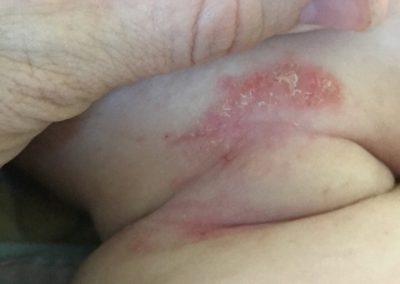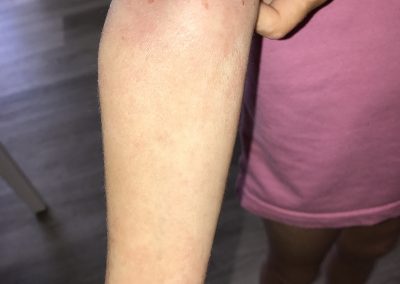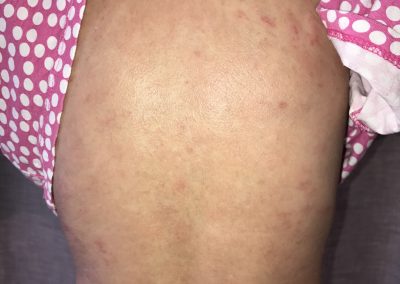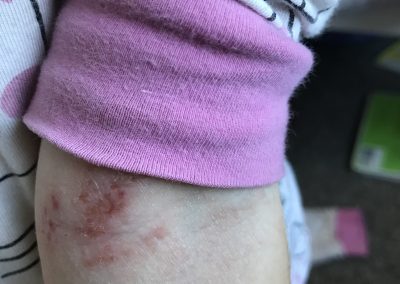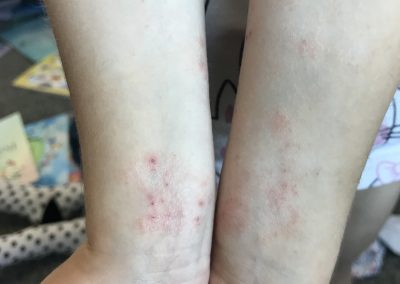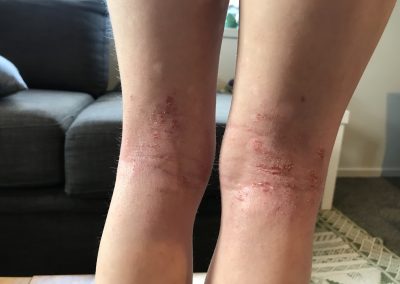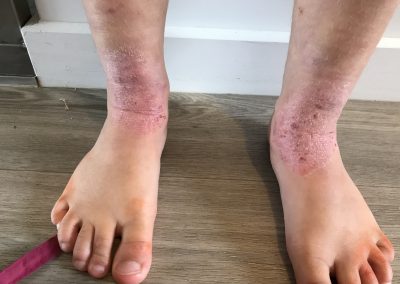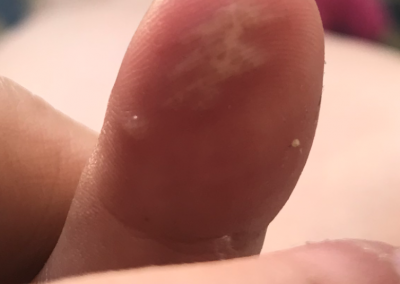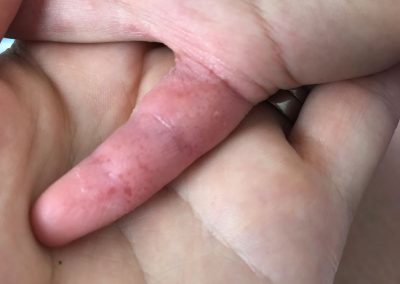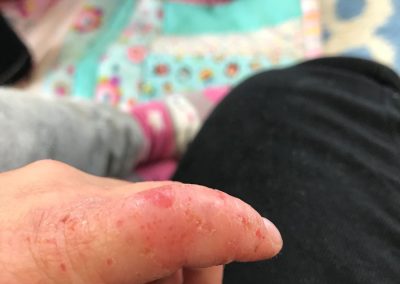What is Eczema?
Eczema is an itchy form of skin inflammation that affects 15% of children and 9% of adolescents in New Zealand. It primarily affects the skin causing itching, redness, swelling, crusting, oozing, dryness, and pain. But more than just skin deep, research has also shown eczema can negatively impact a child’s quality of life, causing disturbed sleep and fatigue, poor self-esteem, behavioral problems, and bullying.
Despite knowing these well-documented impacts on many children’s lives, doctors and scientists have not yet come to a firm conclusion about what actually causes eczema. For most types of eczema, genetic and environmental triggers are involved. It is known to run in families, with a higher chance of a baby developing eczema if a close family member has asthma, eczema, or hay fever. Most people with eczema have an abnormally over-reactive immune system that produces inflammation in response to a substance outside or inside of the body. This inflammation shows up in the skin as the red, itchy, and painful symptoms of eczema.
Research has also shown that some people with eczema have a gene mutation that leads to lower production of filaggrin (filament aggregating protein) – a protein that helps maintain tight junctions between skin cells. Normal skin has a healthy, waterproof, tight layer of skin cells on top which creates a barrier and maintains healthy skin integrity. When the top layer of the skin has loose junctions instead of tight ones, it becomes leaky and allows moisture to escape – leading to dry, itchy skin. And these loose junctions also allow bacteria, viruses, and allergens to enter the skin – leading to infection and inflammatory response by the immune system. This then leads to an allergic response of the skin and an overreaction by the immune system to other triggers such as food allergens in the gut.
Environmental and internal triggers play a huge part in eczema flares. These triggers can include dry skin, irritants, stress, climate and sweating, allergens, infection, and hormones. It is important to identify your triggers in order to keep your eczema under control. These will be different for each person, and may also change depending on the time of year. It is also known that there is a higher chance of eczema developing in children who live in urban areas with high levels of pollution, and colder climates.
There are seven distinct types of eczema that have been described by researchers and doctors:
1. Atopic dermatitis/Atopic Eczema
This is the most common form of eczema and usually appears in childhood. It can range from mild to severe, and a child is more likely to develop this type of eczema if one of their parents had it. The skin becomes red, itchy, dry, and scaly, and it is primarily a result of a lack of filaggrin causing a leaky top layer of the skin. Patches of affected skin are commonly found in the creases of the elbows and knees, and on the face, neck, and wrists. Children with atopic dermatitis tend to have a higher risk of developing food sensitivities, asthma, and hay fever. Some may grow out of their symptoms. Atopic dermatitis usually involves flare-ups where eczema gets worse for a period of time, often caused by an environmental trigger.
2. Contact dermatitis
A skin reaction caused by coming into contact with certain substances. This is also caused by a lack of filaggrin where the leaky top layer of the skin has allowed allergens to enter, causing the body to become sensitized and develop an allergic reaction. Symptoms include burning dry, red, itchy skin, blistering, and hives. Contact dermatitis can be caused by repeated exposure to substances that irritate the skin such as solvents, weed killers, detergents and hair dyes; or to a known allergen such as nickel, latex, dyes, and antibiotics.
3. Seborrheic Dermatitis
Commonly called dandruff, and normally found on the scalp but can also occur on the skin of the face, arms, legs, and body, and can be mistaken for nappy rash. It is the overgrowth of yeast and skin cells, which shed off as white flakes. It is common to develop infections with this kind of eczema, and it can look and feel like a burn in severe cases
4. Dyshidrotic Eczema/Pompholyx
This type of eczema normally occurs in adults under 40 years of age. It usually appears on the hands and feet and is characterized by intense itching and the appearance of small blisters. The blisters can be quite painful, can become large and watery, and can become infected. It is important not to pop the blisters, as this increases the risk of infection. After the blisters clear up within 2-3 weeks, the skin often becomes cracked and dry, leading to skin fissures. During the first phase of itching and blisters, it is treated by keeping the skin dry and using a light moisturizer. In the second phase of blisters drying up, a heavy moisturizer or ointment can be used to avoid cracking. Pompholyx can be caused by seasonal allergies, change of temperatures, immersion contact with water and chemicals, or stress.
5. Nummular/Discoid Dermatitis
A type of eczema characterized by circular disc-shaped patches of itchy, red, cracked, and swollen skin. These discs usually appear on the lower legs, torso, and forearms. The center of the disc can sometimes clear up, leaving a ring of red skin. It can occur at any age, including children. The cause is unknown but can be triggered by an immune response to an insect bite, wound, friction or burn, or general inflammation. Other possible triggers are cold weather, certain medications, and poor blood flow.
6. Stasis/Varicose/Venous/Gravitational Dermatitis
A skin condition found in older adults, where there has been a decline in blood flow to the legs and commonly found with varicose veins. It results in dry, itchy, scaly, skin. If the skin is not kept moisturized, it can crack, blister, weep, crust, and become infected. It is very important to not scratch or pick at the spots and blisters as the skin can become very fragile.
7. Neuro-dermatitis
Where a person develops a skin irritation due to scratching out of habit.

